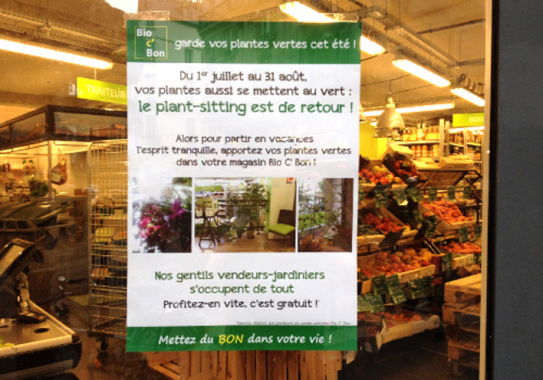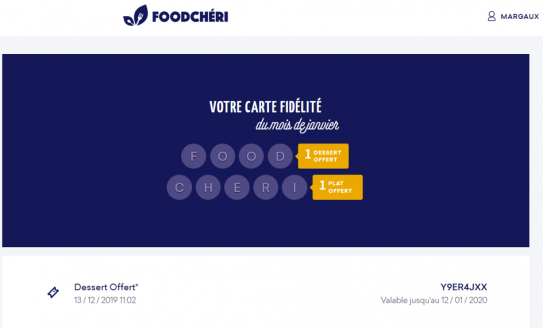
Is loyalty still the best proof of love?
There was a time when loyalty was rewarded with stamps on a recycled paper card, with no tracking, no customer data and no history, and yet there were valued, happy and loyal customers all the same!
This was followed by a period when it was hard to find a wallet with enough room to contain the many cards, now plastic, shops gave to their customers (in 2016, a study carried out by TNS Sofres estimated there were seven cards per customer)! However, such schemes are costly and investment in them has been called into question; not to mention those that are more a test of patience than a reward for customers. At a time when certain brands, such as Décathlon1, are rolling them back, we take a look at good practices and new trends for loyalty schemes.
The art of seduction
All relationships begin with a period of courtship! And, in a fiercely competitive environment, brands must find ingenious ways to make their loyalty schemes stand out. In 'The Loyalty Report 2017', Bond Brand Loyalty highlights two types of benefits: dividends and experiences. 'Dividends' means anything that brings monetary value for users, including coupons, discounts, cashback, gift vouchers and free delivery. These various pecuniary benefits do encourage purchases, but, over the years, consumers have come to expect them. According to the report, these privileges no longer influence members' satisfaction, so brands must go further in the way they offer benefits, in particular by personalising their offerings. Auchan has done just this, with its loyalty scheme named "Waaoh?!".
Each week, the supermarket sends personalised challenges to its scheme members, who select which ones they would like to take on. The supermarket Monoprix is adopting a similar approach, making personalisation a core part of its redesigned loyalty scheme, allowing members to choose the top three products they would like discounts on, based on their order history. This gives them a 10 to 20% discount on each purchase!

Source : https://www.lsa-conso.fr/les-clients-de-monoprix-vont-choisir-eux-memes-leurs-produits-en-promotion-exclu
Experiences: virtual badges, personalised recommendations, content, partnerships with other brands, forums, creation of communities, exclusive experiences, charity actions, co-branding… There is vast potential for brands to use their imaginations in order to offer ever more innovative, emotional and rewarding experiences for their members, while building a more personal relationship with their customers.
With this in mind, M&S has chosen to offer exclusive invitations to fashion shows and cookery classes run by big-name chefs, for example, rather than discounts. In order to get off the beaten track of the "same old" loyalty scheme dividends and experiences, now is the time for differentiation! Here, once again, brands are putting all their energy into coming up with original, sometimes surprising, and always attractive rewards in order to encourage membership.

Source : https://www.marmiton.org/communaute/blog_plant-sitting-vos-plantes-seront-bien-gardees-cet-ete.aspx
Bio c' Bon is offering a "plant-sitting" service to take care of members' plants while they are away. The ready-to-wear brand Devianne is promising to refund damaged clothing up to six months after purchase! Elsewhere, Mango is giving members the option to use their points with a wide selection of partners?(including Deezer and Rakuten), or to give them to friends or non-profits. There is a growing trend towards engaged and responsible approaches, which reflects the concerns of today's "consom’acteurs" (socially responsible consumers).
Nature & Découvertes is paying €1 of its club membership fee and 10% of its profits to its biodiversity protection foundation. Toms is giving a pair of shoes to children in developing countries for each purchase made. Similarly, Weight Watchers is offering members the option to donate their rewards to Secours Populaire, a non-profit that fights poverty and exclusion in France and around the world. These approaches show how loyalty and social responsibility can be combined, while enhancing brand image. To make sure their loyalty schemes are not dull, brands must position themselves as a source of value for their members, by offering benefits that reflect their concerns and social engagement.
Keeping the flame alive
Earning loyalty is not the same as maintaining it and, in the loyalty scheme war, diligence and commitment are the most important battle to win, particularly when you consider a study by Accenture Strategy, which found that loyalty scheme members generate between 12% and 18% additional turnover in comparison with non-member customers. Based on this observation, the meal delivery brand Food Chéri gives its members monthly challenges in order to encourage opportunistic consumption. If they buy four meals during the month, they get a free dessert. And they get a free dish for nine orders. Customers therefore only have 30 days to meet the challenge, which is a good way to boost brand preference.

Source : https://foodcheri.fr
Brands are using membership fees to build loyalty to their loyalty schemes: in exchange for an annual subscription, they offer services that enhance the customer experience and increase the loyalty of their members. For €15 per year, La Redoute & MOI (La Redoute) offers its members a 10% discount on orders, free delivery and a payment facility. For €49 per year, Amazon goes even further by offering free access to multimedia content on Amazon Prime Video. However, in 2018, JPMorgan estimated that in order to achieve profitability, this service would need to be provided at $785 in the United States (or $65 per month). And yet, this long-term strategy is paying off, since, in 2018, Prime members spent an average of $1400 on Amazon, compared with $600 for non-Prime members. One of the reasons for this is that many Amazon Prime members feel the need to justify their membership fee! In the brand preference race, this strategy seems to be bearing fruit.
However, loyalty is about more than just transactions. Today, there are all kinds of ways to allow members to earn points, including sharing on social networks, downloading the mobile app, enriching user data, sponsorship and birthdays. All of these are opportunities to touch base with customers and learn more about them, while building a long-term relationship. And this is where content comes into its own: Kinder is courting parents with its Kinder club, which offers content in the form of a webzine. Parents are given access to articles and activities to enrich their family life, based on their children's ages. The brand is going even further by enabling them to share their own content, such as ideas for days out, in order to earn points.

Source : https://kinder.fr
Another fast-growing trend is the use of tiered loyalty schemes. While they are nothing new in the travel industry, these schemes are becoming popular in other sectors: Lacoste offers three tiers according to members' purchases. With 'Legend' status, members can access very private events and are given a premium birthday present. At Sephora, 'Gold' status provides access to free make-up classes, private evenings and even a dedicated product line. By appealing to pride and a feeling of belonging, brands are encouraging their members to move up to higher tiers in order to access increasingly high-end services. It is a way for brands to make a greater distinction between their various customers.
Never say never, in love and in loyalty... The field of possibilities is wide open to ensure that schemes are anything but dull and a source of value for their members. Between providing a global experience, addressing customers' concerns and creating a feeling of attachment, brands have various means at their disposal to imagine the schemes of today and tomorrow. Loyalty is like love: it is a work in progress.